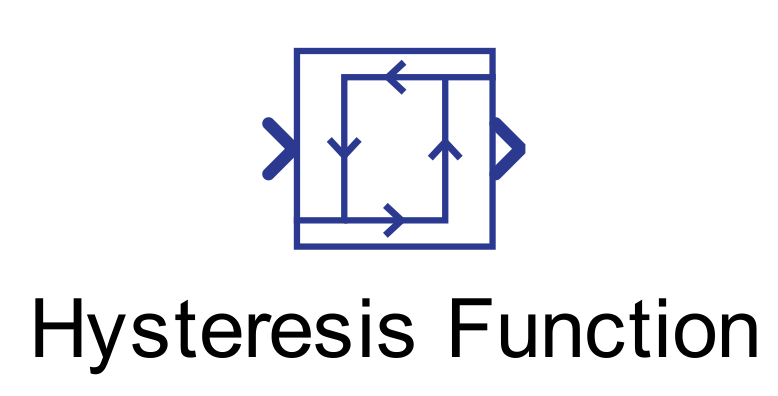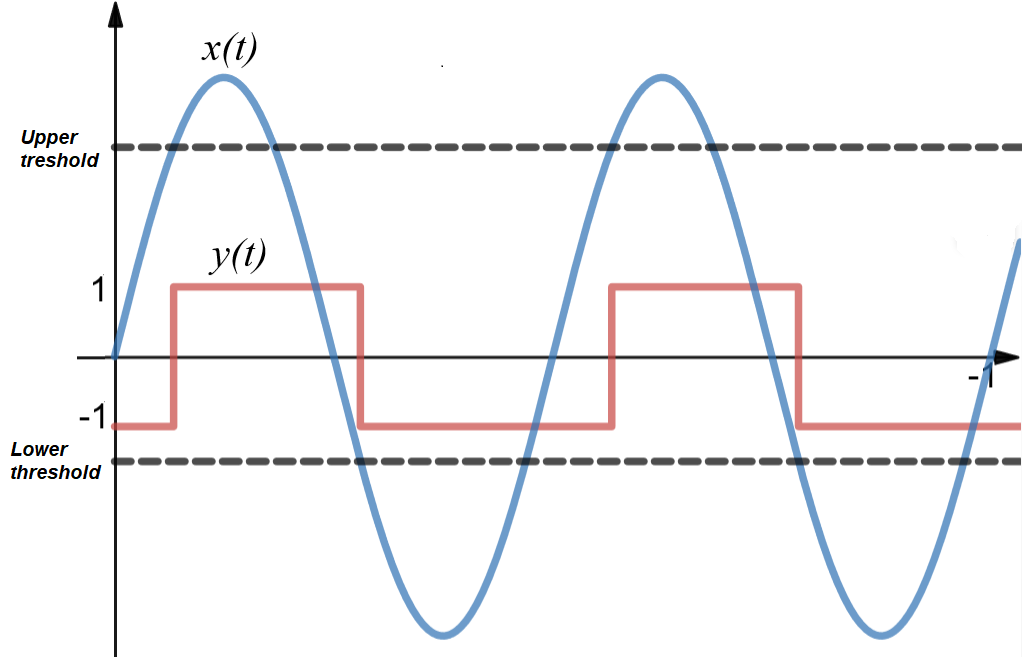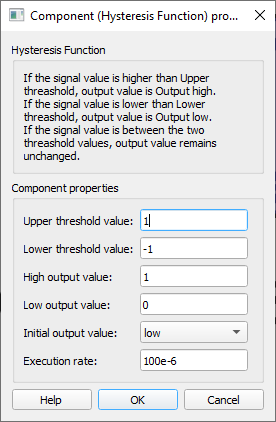Hysteresis Function
Description of the Hysteresis Function implementation in the Typhoon HIL toolchain.
Component Icon

Description
The Hysteresis Function component implements a hysteresis function based on given threshold values.
If the input signal is higher than the Upper threshold value, the output is High output value. If the input signal is lower than the Lower threshold value, the output is Low output value. If the signal is in between these values, the output does not change.
The output of the Hysteresis Function component can be represented with the following equation:

Figure 2 illustrates the behavior of the hysteresis function component if the Upper threshold is 3, the Lower threshold is -1.5 and High and Low outputs are 1 and -1, respectively. The initial value is low.

Hysteresis component is a composite component and its implementation is shown in Figure 3:

Ports
- Input (in)
- The input signal of the component.
- Supported types: uint, int and real.
- Vector support: yes.
- The input signal of the component.
- Output (out)
- The output signal of the Hysteresis Function component.
- Supported types: uint, int and real.
- The output type is inherited from the input signal.
- Vector support: yes.
- The vector length is inherited from the input signal.
- Supported types: uint, int and real.
- The output signal of the Hysteresis Function component.
Properties

- Upper threshold value
- Type in the upper threshold value. If the input signal is greater than this value, it will trigger the change of the output value to High.
- Lower threshold value
- Type in the lower threshold value. If the input signal is lower than this value, it will trigger the change of the output value to Low.
- High output value
- Type in the value of the output signal in the High state.
- Low output value
- Type in the value of the output signal in the Low state.
- Initial output value
- Select the Initial state of the Hysteresis Function component. The available options are: low and high.
- Execution rate
- Type in the desired signal processing execution rate. This value must be compatible with other signal processing components of the same circuit: the value must be a multiple of the fastest execution rate in the circuit. There can be up to four different execution rates. To specify the execution rate, you can use either decimal (e.g. 0.001) or exponential values (e.g. 1e-3) in seconds. Alternatively, you can type in ‘inherit’ in which case the component will be assigned execution rate based on the execution rate of the components it is receiving input from.